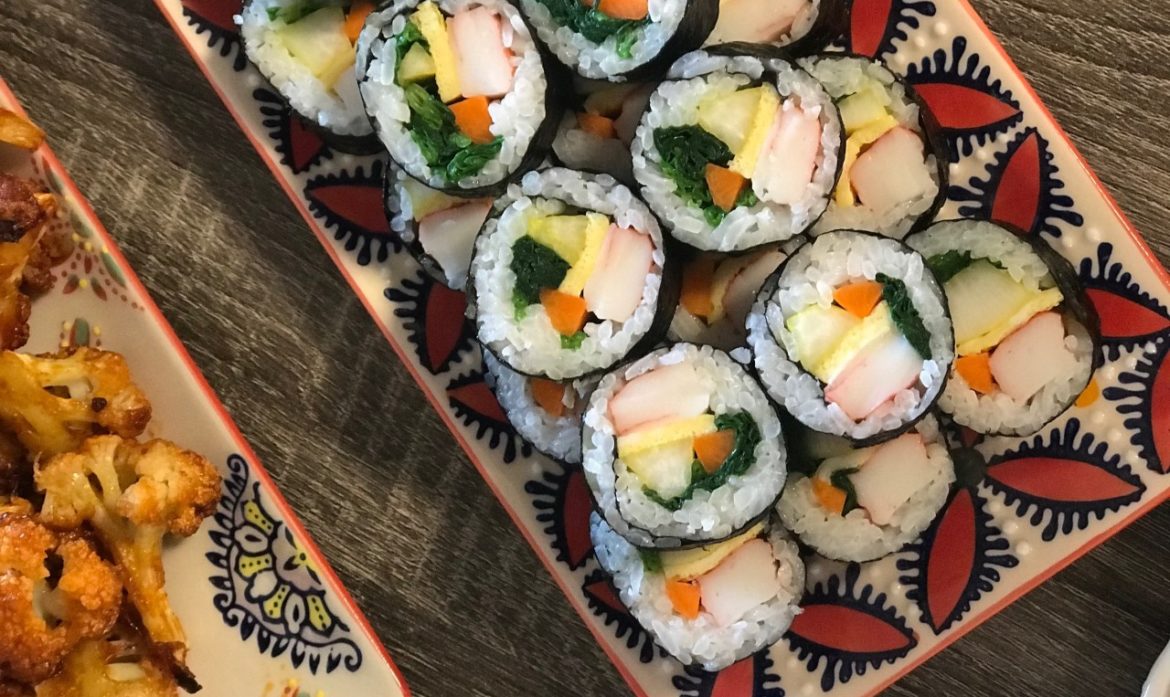
Kimbop and Banchan and Bean Sprouts
Quick note– I’ve been writing this post for a couple weeks, and already the first paragraph has not aged particularly well– “content” is not exactly how I’m feeling in a city that was literally on fire a few days ago, and is still reeling now. I’m not prepared to unpack all that in a blog post about food, but it seems weird to just barrel ahead as if everything were fine. My heart is with everyone experiencing injustice anywhere, and I sincerely hope that the craziness of these times signals a real turning point and a better world to come.
This past Tuesday marked eleven weeks since my last normal day at my physical office. The initial delight of being allowed to stay at home indefinitely has given way to a new routine, and all the ups and downs that come along with that. However, I am still feeling content in my little apartment, and I still think I could go on this way indefinitely. I recognize, of course, that I am extremely lucky to feel this way– I don’t have to worry (too much) about income, homeschool any children, care for sick relatives, or put my health on the line by working in an essential industry, and I have a personality that is exceptionally well suited to sheltering in place. I know that’s not all true for many people. There’s a tiny collect in the Compline service in the Book of Common Prayer that I think about almost every day lately: “O God, your unfailing providence sustains the world we live in and the life we live: Watch over those, both night and day, who work while others sleep, and grant that we may never forget that our common life depends upon each other’s toil.” A hearty (but quiet, Compline-appropriate) amen to that.
Currently reading: The Picture of Dorian Gray by Oscar Wilde. Other highlights since my last post: The Glass Hotel by Emily St. John Mandel, The Sisters Brothers by Patrick DeWitt, Tell Me How It Ends by Valeria Luiselli, and Weather by Jenny Offill.
Currently listening: Well, Alex, of course. But also, lots of podcasts (You’re Wrong About, Home Cooking with Samin and Hrishi, and A Way With Words, among others), and lots of Chet Baker Radio on Spotify.
Currently cooking: Korean food. Lots and lots of Korean food.
And that, friends, is the topic of today’s blog post. Specifically, I want to shout from the rooftops about Korean Home Cooking by Sohui Kim, which is where I’m getting all my Korean recipes these days. This book got a lot of buzz when it came out in 2018, including a pretty large feature in Bon Appetit, so I’m not exactly giving away a big secret here, but trust me when I say that this cookbook needs to be on your shelf if you have any interest at all in making Korean food at home. I’ve made ten different dishes from Korean Home Cooking, which is a drop in the bucket given how many it has to offer– but the kicker is that I’ve made almost all of them a minimum of three times. There hasn’t been a single dud so far, and even the complicated ones, like homemade kimchi and kimbop, are straightforward and relatively easy to follow.
The only caveat I’ll offer is that you’re going to need some authentic Asian ingredients, some of which I have had zero luck sourcing in supermarkets. (Here’s another opportunity to express my gratitude for having spent the last decade or so in cities with reliable Asian markets– special shoutouts to Super 88 in Allston and Truong Thanh in Minneapolis.) I would throw out the standard line about how easy it is to source elusive ingredients on Amazon, but 1) who does that? I certainly never have; and 2) the middle of a pandemic doesn’t seem like the ideal time to burden warehouse employees and delivery drivers with non-essential orders… so maybe bookmark this post for later if you don’t live near an H-mart or something.
Also, I’m not really going to offer any recipes here, except to link to the ones that have already been published in Bon Appetit, both because infringing on copyright rules seems iffy, and because I really want you to buy this book! (Buy it from bookshop.org and support a local bookstore, while you’re at it.) Nope, in this post, I am simply going to show off some food I made and leave it at that. Let’s start with banchan!
If there’s one thing I love about Korean meals, it’s that they have snacks built in. When I go to Korean restaurants, I’m almost more excited about all the little ramekins of banchan than I am about the bulgogi (allllllmost). Fun fact! When Alex and I lived in Allston, there was a Korean restaurant a few blocks away from our apartment, and Alex got in the habit of popping in to order a few takeout containers of whatever banchan they had on hand. They seemed puzzled at first that anyone would come in and leave with just, like, five bucks’ worth of marinated bean sprouts, but Alex stopped in so often that they eventually made a button on their cash register specifically to ring him up.
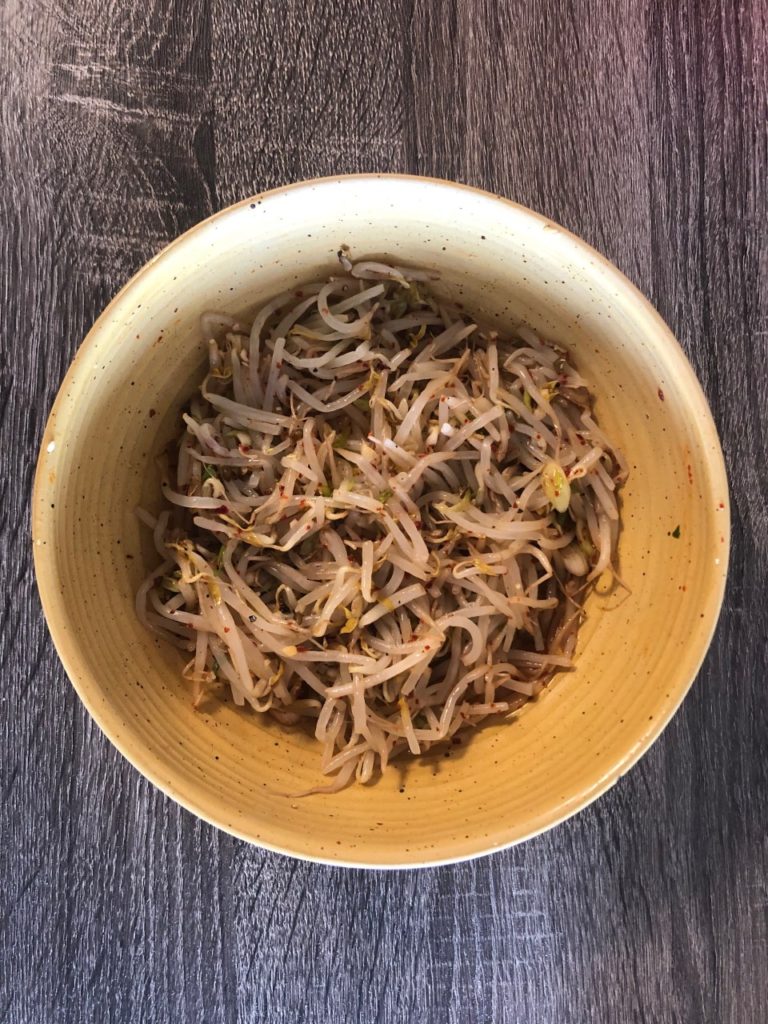
When I cook Korean, I usually make at least three banchan: the aforementioned bean sprouts; cucumbers marinated in rice vinegar, sesame oil, and gochugaru; and soy marinated eggs. Oh, sweet goodness, these eggs. I am already of the opinion that a hard-boiled egg, when left slightly soft and jammy in the middle, is one of the single greatest foods known to man, but when you let that egg sit for an hour or two in a mixture of soy sauce, chili, garlic, and rice wine? Unbelievable. (The recipe is on Bon Appetit, so get on it!)
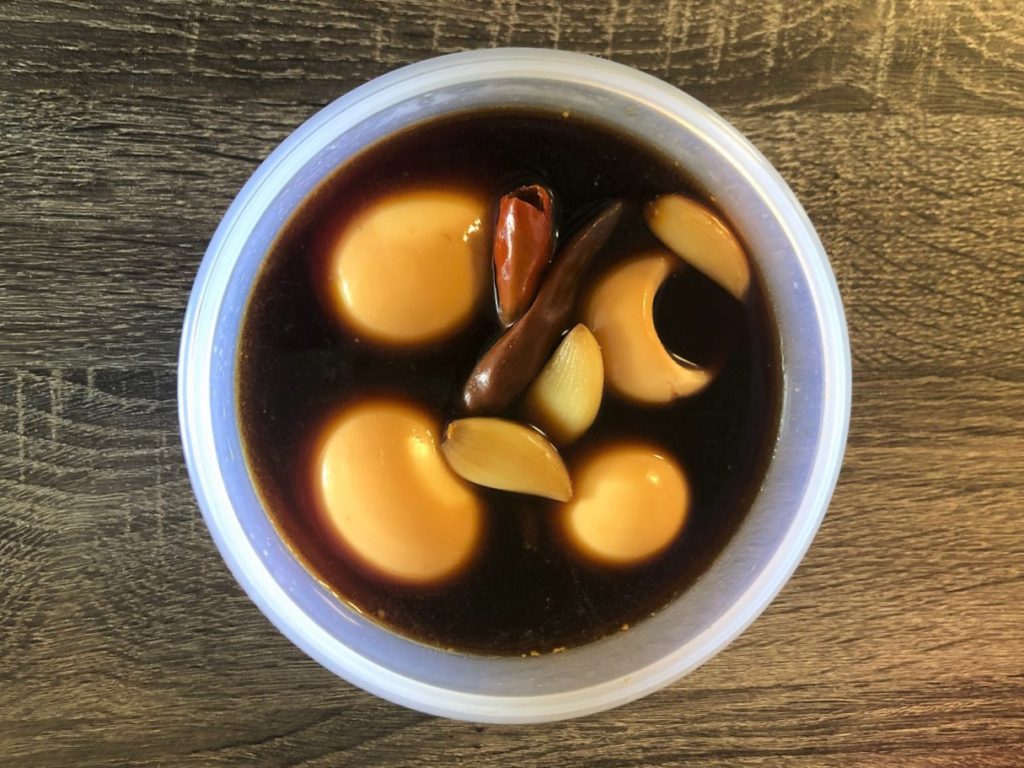
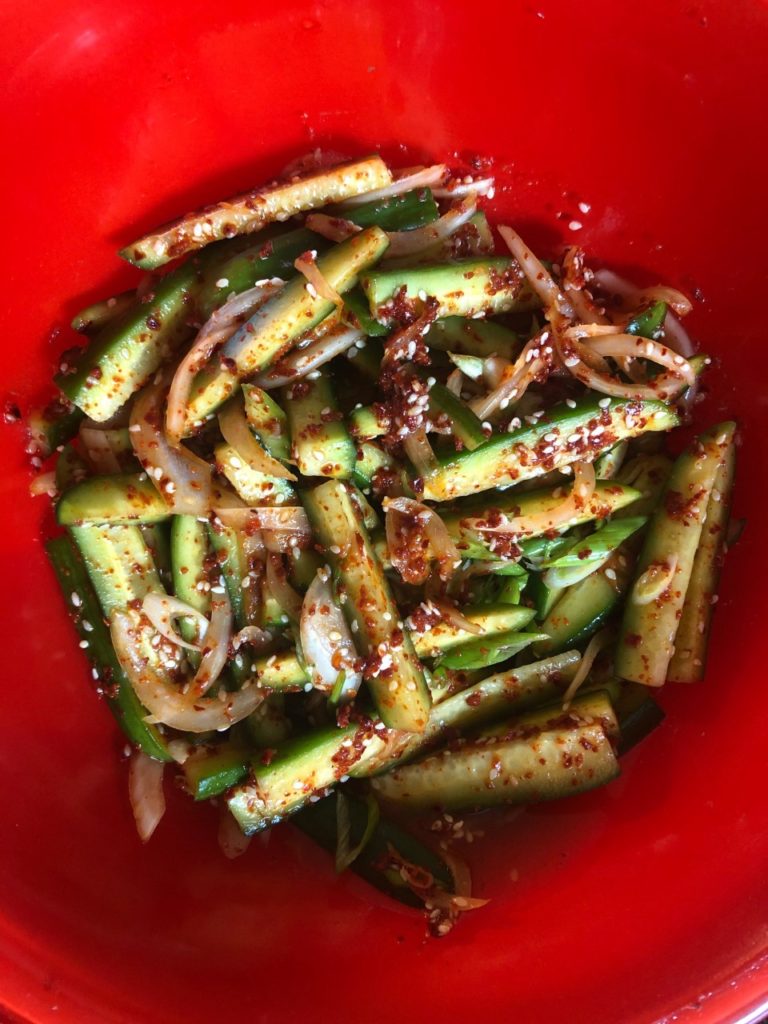
A couple weeks back, we decided to try our hands at kimbop, sushi-like rolls stuffed with rice, crab sticks, pickled radish, egg, and spinach. Alex’s family introduced me to kimbop (and tons of other Korean food) at a mom-and-pop place in Radcliff, Kentucky called Song’s Kitchen, and I probably haven’t tasted it since that day over ten years ago. Making it ourselves was, hands down, the most fun I’ve had in the kitchen since this whole stay-at-home thing started, and it was so much easier than I expected! Time-consuming, yes; required nearly all the dishes in my kitchen, yes; but other than that, simple! We don’t own a sushi mat, but we found it wasn’t really necessary. We just rolled them up by hand, like so:
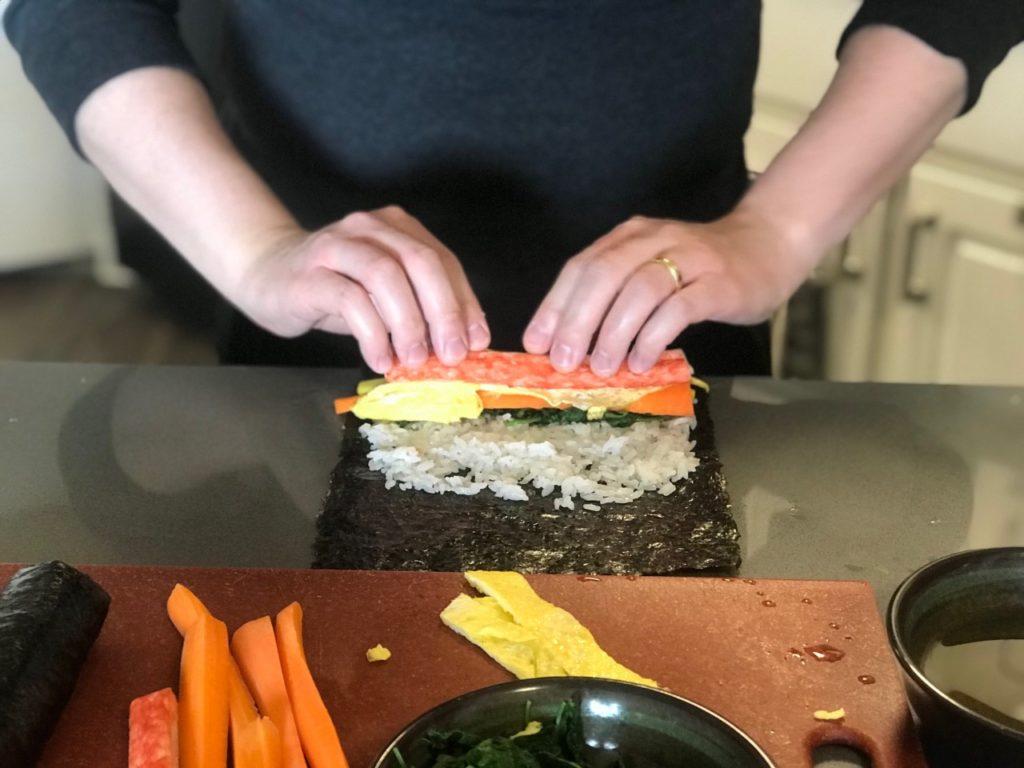
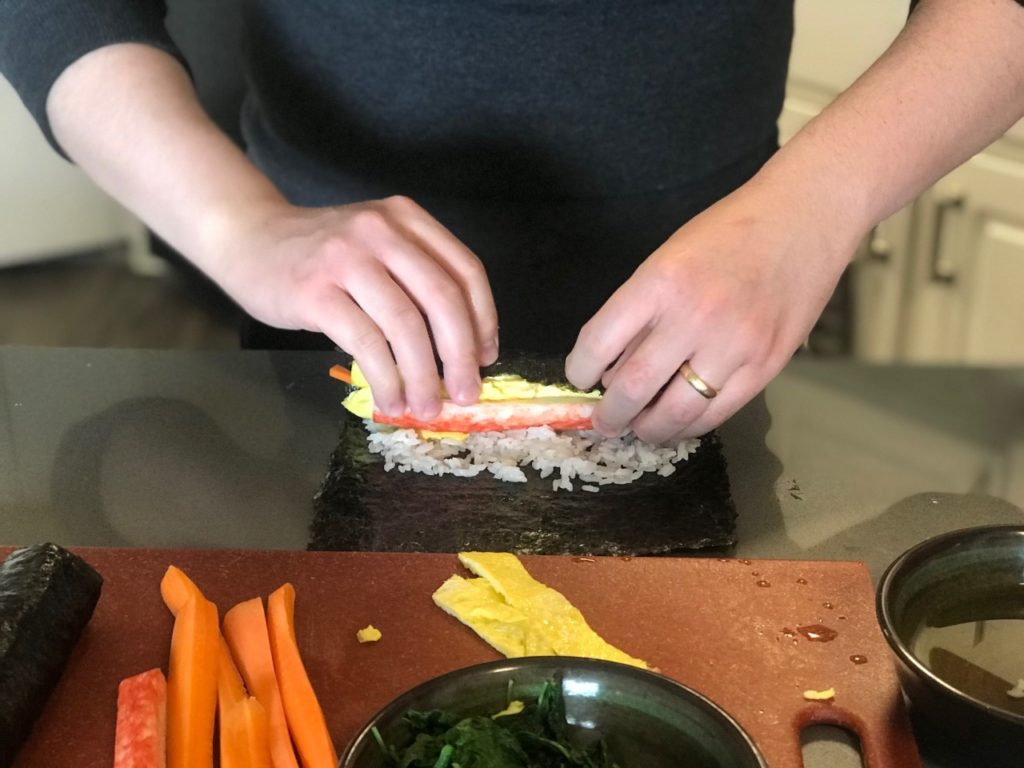
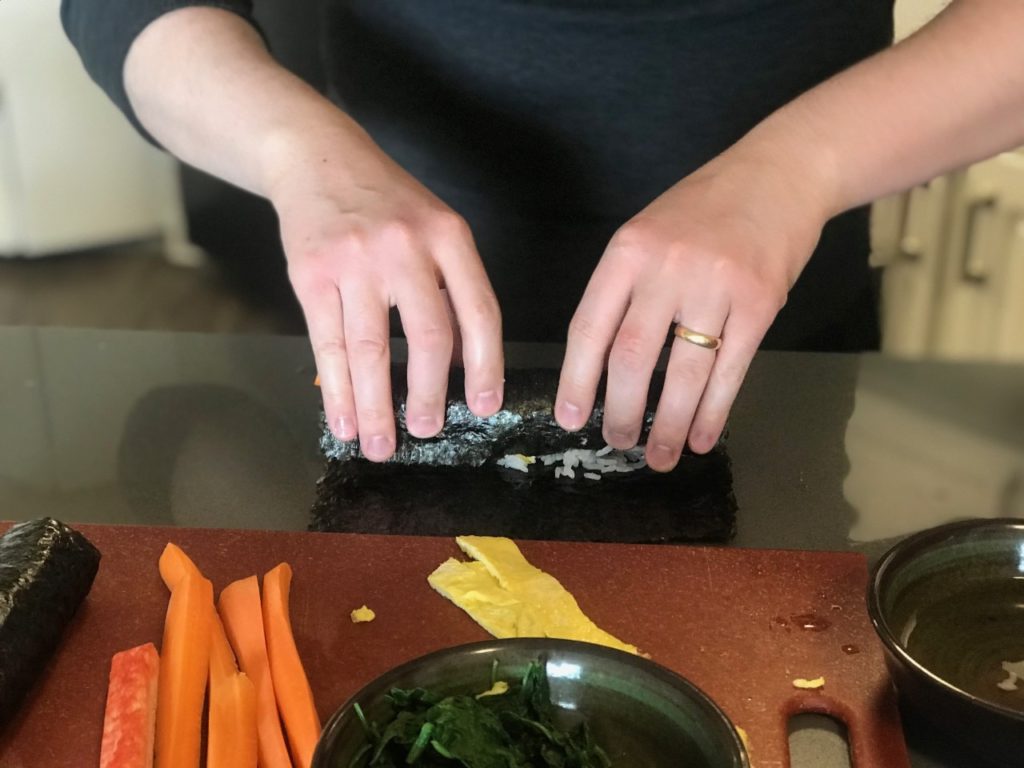
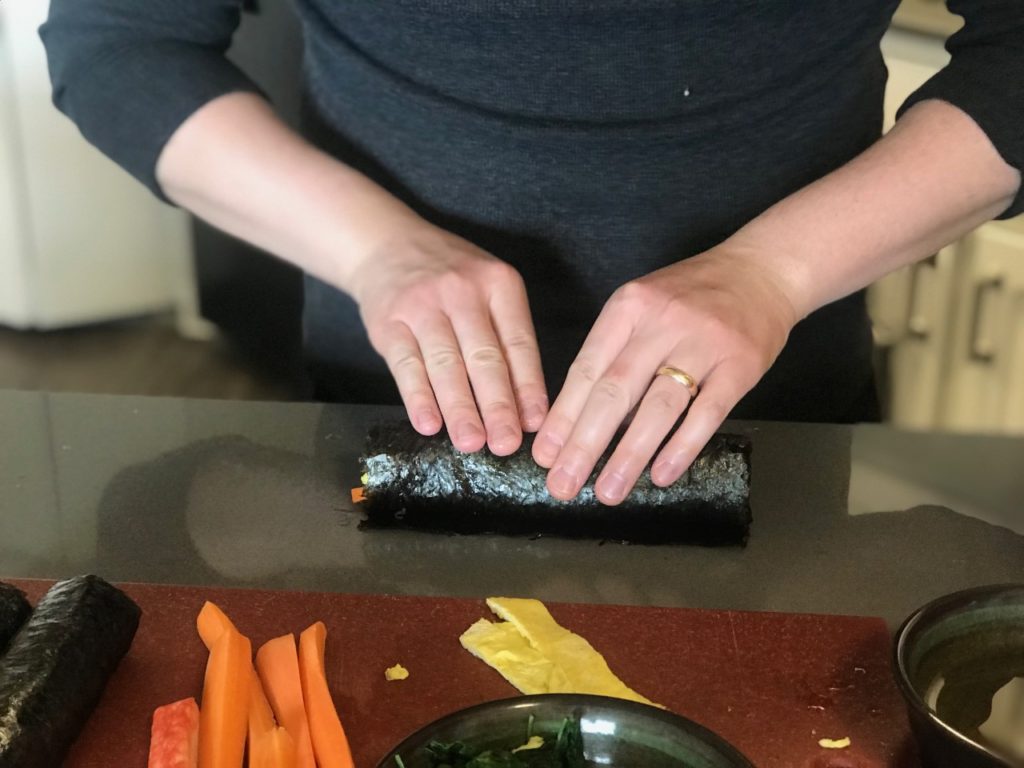
We were so proud of ourselves.
And here’s our full spread! (There’s also some roasted cauliflower in there with a gochujang sauce, which was perfectly fine, but it was an internet recipe, not from the book, and definitely more Americanized; it tasted great on its own, but felt like an interloper in this meal.)
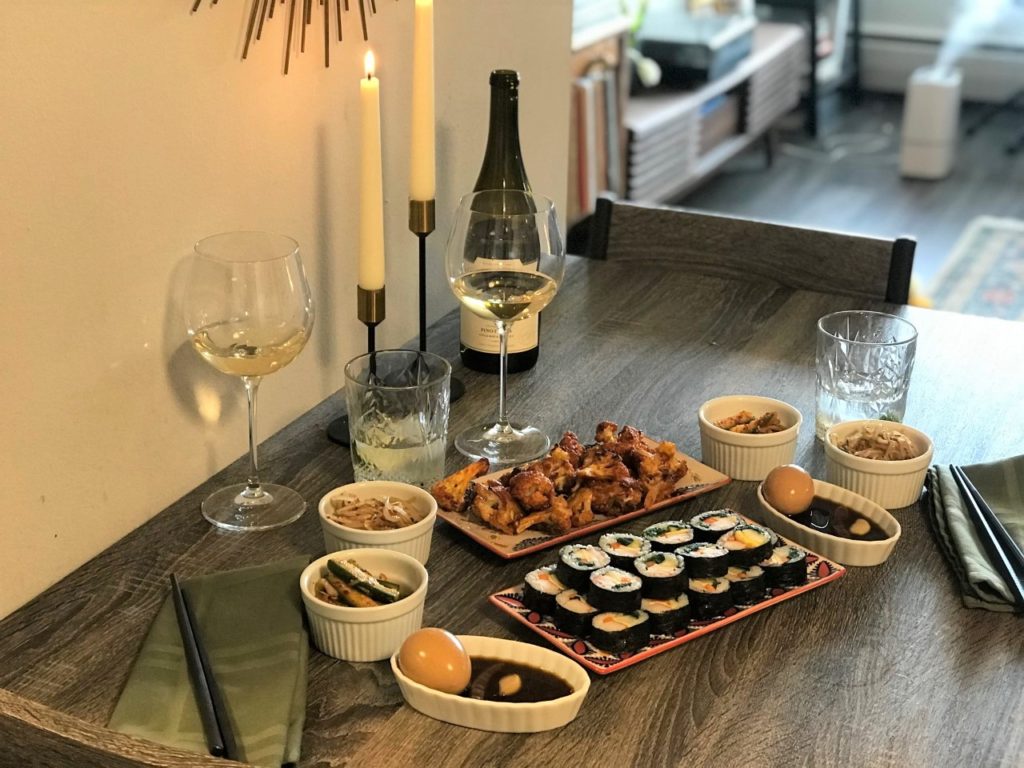
I truly can’t say enough good things about Korean Home Cooking– and, more generally, about cooking outside your own culture. These feel like awful times in the US, with all our polarization and prejudices, and our suspicion of people who seem different from ourselves. While cooking from other traditions is not a remotely adequate response to racial injustice, at the very least, it can open your heart to other cultures, and maybe, just maybe, spur you on to further action.
Other recipes by Sohui Kim that were featured in Bon Appetit include these two stews, braised short ribs, and additional banchan.
